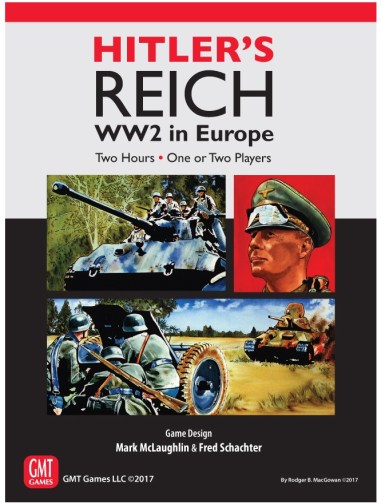Below you will find the fifth in a series of designer’s notes articles from The Last Hundred Yards series designer Mike Denson. In this segment he will discuss mortars in LHY. You can also find this article on his ConsimWorld Community page. Enjoy! -Rachel
Monthly Archives: May 2021
Roman Conquest of Britain using Commands & Colors Ancients – Part 2
by
I will continue today the mini-campaign which I was playing with Marcin using C&C Ancients and depicting the Roman conquest of Britain. The first part, where we played the initial 3 scenarios, can be found here: Roman conquest of Britain using C&C Ancients – Part 1.
Just a reminder: the idea was to play C&C Ancients scenarios featuring the Romans battles in Britain, combining them in a mini-campaign. There is a special map created to depict the locations, each engagement has a historical introduction, they are played in chronological order so the flow of history unfolds nicely and connect together. In essence it is not only pure gaming experience but also a historical insight.
“All Along The Demilitarized Zone”: Playing Next War: Korea (Part 4)
by
Ian M. Sullivan is the Special Advisor for Analysis and ISR at the Deputy Chief of Staff for Intelligence, US Army Training and Doctrine Command.
Disclaimer: All views expressed in this post are the author’s and do not necessarily reflect those of the Department of Defense, Department of the Army, or Army Training and Doctrine Command
“It’s All in the Cards”: A Compendium of Ancient Civilizations of the Middle East’s Cards: Chapter Two, Part Three – Resource Cards
by
We continue our sojourn through the cards of GMT’s upcoming, now P-500 listed, second game of the “Ancient Civilizations” series: Ancient Civilizations of the Middle East (ACME) GMT Games – Ancient Civilizations of the Middle East [the first game of the series is Ancient Civilizations of the Inner Sea GMT Games – Ancient Civilizations of the Inner Sea (ACIS)].
The Last Hundred Yards Designer’s Notes: Armor
by
Below you will find the fourth in a series of designer’s notes articles from The Last Hundred Yards series designer Mike Denson. In this segment he will discuss armor in LHY. You can also find this article on his ConsimWorld Community page. Enjoy! -Rachel
The Chronicles of Ōnin #2: Yoshimasa and the Muromachi Court
by
Ashikaga Yoshimasa unexpectedly became shogun at a young age, after his older brother Yoshikatsu died under possibly suspicious circumstances, and it is clear that he never really wanted the responsibility that came with the position. He was more interested in artistic and spiritual pursuits, and is known today not only for his mismanagement of the Ōnin War, but also for his patronage of the artistic traditions that developed into (now) classical Higashiyama culture. These traditions draw on Zen Buddhism and the concept of wabi-sabi (imperfection and impermanence), and include the tea ceremony, flower arranging, Noh theatre, ink painting, and certain forms of poetry. Before the outbreak of the Ōnin War, Yoshimasa ordered the construction of a new villa that he planned to (and eventually did) retire to, now called the Silver Pavilion (Ginkaku-ji), in contrast with the older and more ornate Golden Pavilion (Kinkaku-ji) commissioned by his grandfather Ashikaga Yoshimitsu. The understated and sometimes sorrowful nature of Higashiyama culture gains an extra poignancy upon learning of its origins in the bloody, and ultimately futile, Ōnin War.
Automated Player’s Aids for Contending Against the Hitler’s Reich Axis Bot (and a Variant Too!)
by
Introduction by Hitler’s Reich Co-Designer & Developer Fred Schachter: Being a big fan of WWII games and of Vez Arponin’s Axis Bot for playing GMT’s Hitler’s Reich Solitaire in particular, Jan Hořínek was inspired to develop an automated Player’s Aid for assisting a Solitaire gamer navigate the rules and distinct gaming environment this version of Hitler’s Reich provides.
Furthermore, as many veteran wargamers are wont to do; Jan modified the Bot’s options so it would behave just a bit differently than the original. What did Jan do? Well, you’ll have to read on and check out the subject links to what Jan created in order to find out!
Thank you Jan for your creativity and wonderful support of Hitler’s Reich: A Card Conquest System Game! Here’s the relevant extract from the email Jan provided me along with links to both versions of the Player Aids he composed. Enjoy!
Flying Colors: Beat to Quarters!
by
Beat to Quarters is an official expansion to Flying Colors by GMT Games and requires a copy of that game (preferably the latest deluxe edition) to play.
One of the most common criticisms of Flying Colors is the clutter of status markers on the map and that they may detract from game play. This concern can be minimized somewhat by using status sheets and a handy pencil to keep track of things on paper. This, however, adds a separate record-keeping aspect that the design of the game goes out of its way to avoid.
Beat to Quarters provides the ultimate way by which to keep track of the status of individual ships through the use of individual tracking cards that are kept conveniently near the map and that are laid out to conveniently hold a variety of status markers such as Broadsides Fired, Sail State, Rigging Damage, and Hull Damage. The cards are designed to be printed at a standard 3.5 by 2.5 inch size so that they can be slipped into card protectors for extended usage.
The Last Hundred Yards Designer’s Notes: Maneuver & Fire Mechanics
by
Below you will find the third in a series of designer’s notes articles from The Last Hundred Yards series designer Mike Denson. In this segment he will discuss the maneuver allowance and fire mechanics in LHY. You can also find this article on his ConsimWorld Community page. Enjoy! -Rachel
Roman Conquest of Britain using Commands & Colors Ancients – Part 1
by
You had probably noticed that I really like to play C&C Ancients scenarios in logical groups, combining them in mini-campaigns – especially, if they are spread across multiple expansions and C3i publications. To really have a feeling of logical and chronological set of events I would normally read historical accounts, create special maps to depict the locations of battles, and try to play the whole set in maximum one-two sessions – so the flow of history unfolds nicely and connect together. That is my way of playing and I get a lot of satisfactions from such approach – not only pure gaming experience but also a historical insight.











